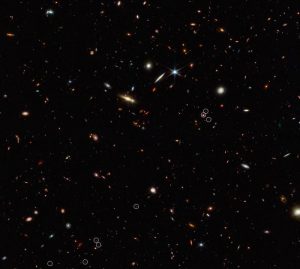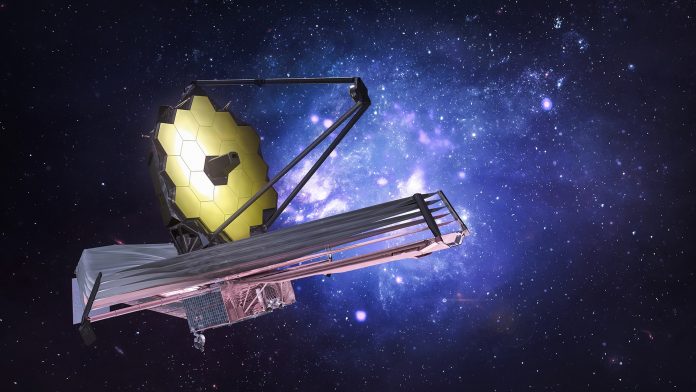Using NASA’s James Webb Space Telescope, a team of scientists has discovered one of the earliest galaxy filaments to be ever associated with a distant quasar.
Led by the University of Arizona, astronomers have found a threadlike arrangement of ten galaxies that existed just 830 million years after the Big Bang. The structure is a 3-million-light-year- long galaxy filament, anchored by a luminous quasar – an active galaxy with a supermassive black hole at its core.
“This is one of the earliest filamentary structures that people have ever found associated with a distant quasar,” said Feige Wang, an assistant research professor at the UArizona Steward Observatory and lead author of the first paper.
It is the first time a structure of this kind has been observed at such an early time in the Universe and in 3D.
The galaxy filament is believed to eventually evolve into a massive cluster of galaxies, like the Coma Cluster in the nearby Universe.
The results are published in two papers in The Astrophysical Journal Letters.
How common is a galaxy filament structure?
Galaxies are not scattered randomly in the Universe. They gather in clusters and clumps as well as in interconnected filamentary structures. These are separated by gigantic barren voids in between.
This cosmic web started out tenuous and as gravity drew matter together, it became distinct over time.
How do galaxies form?
Embedded in dark matter, galaxies form where dark and regular matter accumulate in localised patches that are denser than their surroundings.
Galaxies ride on strings of continuous dark matter, known as filaments. This is similar to the crests of waves in the ocean.
The newly discovered galaxy filament marks the first time a structure has been observed at a time when the cosmos was just 6% of its current age.

“I was surprised by how long and how narrow this filament is,” said Xiaohui Fan, Regents’ Professor of Astronomy at Steward and a co-author on both publications.
“I expected to find something, but I didn’t expect such a long, distinctly thin structure.”
The discovery was made as part of the ASPIRE project
The galaxy filament discovery was made as part of the ASPIRE project, a large international collaboration led by University of Arizona researchers.
ASPIRE, A SPectroscopic survey of biased halos In the Reionisation Era, aims to study the cosmic environments of the earliest black holes.
The project is set to observe 25 quasars that existed within the first billion years after the Big Bang. This is a time known as the Epoch of Reionisation.
“The last two decades of cosmology research have given us a robust understanding of how the cosmic web forms and evolves,” said team member Joseph Hennawi of the University of California, Santa Barbara.
“ASPIRE aims to understand how to embed the emergence of the earliest massive black holes into our current story of cosmic structure formation.”









